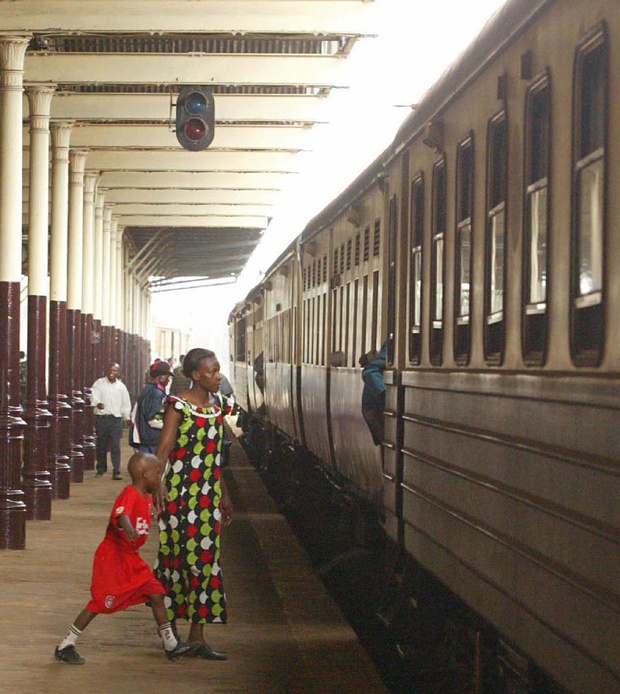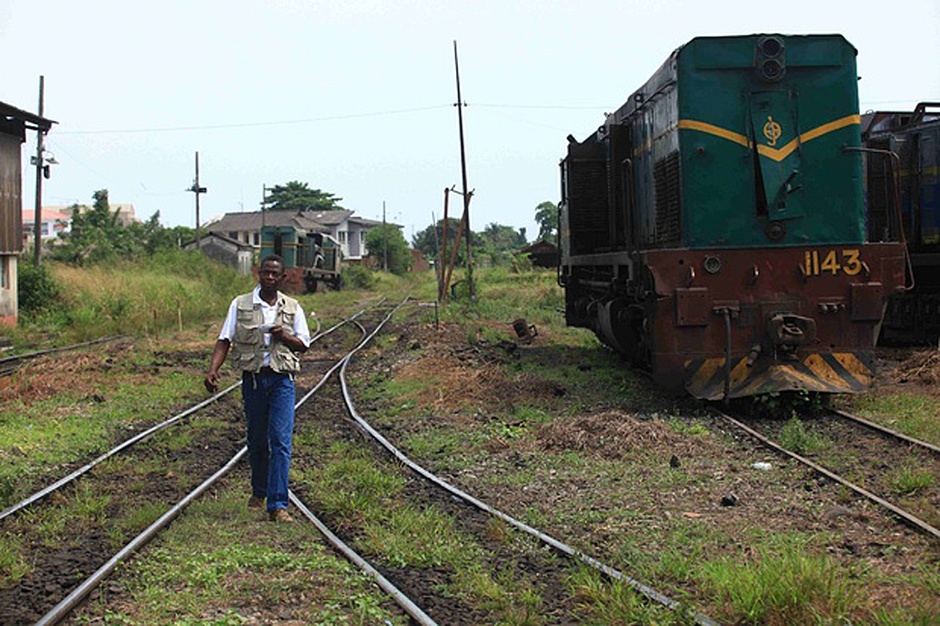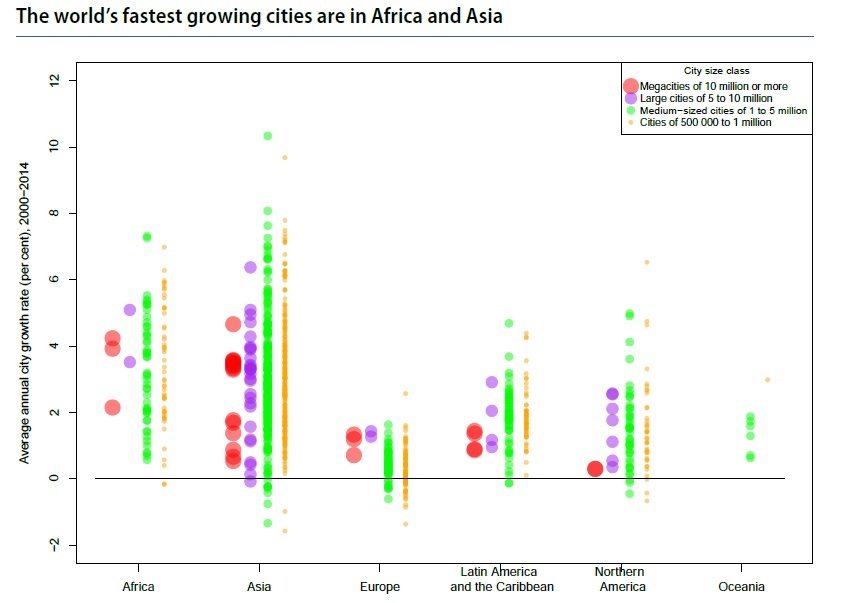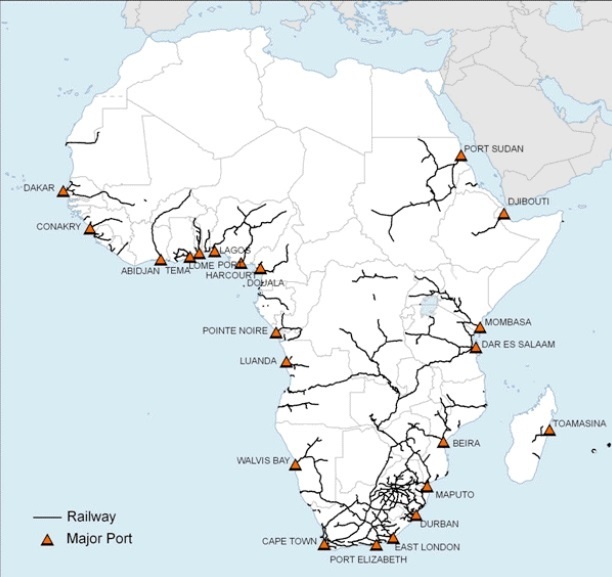Resurrecting relics of imperial rule is an unorthodox transit-development policy. But Africa’s “secondary cities” are set to benefit.

A somewhat surprising transportation policy is gaining steam across Africa: The rehabilitation of old colonial-era railways.
Over 220 miles of the Uganda-Kenya railway, which broke ground in 1896, will be revitalised by 2017. Ethiopia, meanwhile, is expected to reopen its 450 mile colonial-era rail line in early 2016. Nigeria, Africa’s most populous country, is also getting into the mix. The West African nation invested $166 million to get old trains back up and running between Lagos, a megacity of over 20 million people, and Kano, an ancient city 700 miles to the north.
[infobox]Rehabbing relics of imperial rule is an unorthodox transit-development policy to say the least. And Africa’s traditional urban centers are unlikely to be the big winners of an expanded rail network.[/infobox]For decades, aging colonial railways just, well, aged. Years of mismanagement and decay rendered them rusted and overgrown with plant life. A 2011 report co-authored by the World Bank and the African Development Bank found that $3 billion was needed to modernise Africa’s railways; the latest revitalisation efforts represent a mere fraction of that need. Nonetheless, the projects symbolize a major shift in the continent’s transportation infrastructure and planning.

Africa’s transportation capacity is currently beholden to road transport: According to the U.N., 80 percent of goods and 90 percent of people are moved via motorised vehicles—leaving many of Africa’s sprawling urban hubs stuck in bumper-to-bumper gridlock. And as Africa’s cities continue to grow, investing in alternative modes of transportation will only become more crucial.
From our partners:
This is one reason revamping colonial-era railways is emerging as an attractive option. “I think it’s one of the most vital forms of development that can happen in Africa right now,” says Stephen Hayes, president and CEO of the Corporate Council on Africa.
Rehabbing the relics of imperial rule is an unorthodox development policy to say the least. And it’s unorthodox in more ways than one: Africa’s traditional urban centers—like Lagos, Nairobi, and Accra—are unlikely to be the big winners of an expanded rail network. Instead, it’s Africa’s secondary cities—with populations ranging from 500,000 to 5 million—often neglected and overlooked by developers, that stand to gain the most.
As the map above demonstrates, most colonial rail networks operate on a linear route (southern Africa is an exception). Rather than creating an interconnected network of cities, as modern railways often do, colonial rails simply connected resource-rich hinterlands to the coastline. The final destination along the port is where goods (and people) were ultimately shipped off to Europe and beyond. Not surprisingly, this is where Africa’s major urban centers grew.
“If you look at the movement of goods, people, information, etc., most of these [African countries] have basically one [rail] line that leads ultimately to the port,” explains Sean Fox, an urban geographer at Bristol University in the U.K.
[infobox]Unlike in the U.S., where major cities are found on both the east and west coasts and the midwest, African countries generally boast a single major city, which is almost exclusively located along the final destination of its colonial railway network: a port.[/infobox]Sean Fox, of Bristol University, says colonial railways contributed to what’s known as a “primate urban system.” This is when single municipalities—port cities at the end of railways, in the case of Africa—come to dominate all forms of urban activity. “What you don’t see is a dense interconnected web of transport infrastructure that could facilitate the movement of goods, people, [and] ideas within the country,” Fox adds.
So unlike the United States, where major cities are found on both the east and west coasts and the midwest, African countries generally boast a single major city, which is almost exclusively located along the final destination of its colonial railway network. Africa’s mid-size cities away from the coast, meanwhile, essentially developed in isolation—from the rail infrastructure and the commercial benefits that came with it.
This is why the revitalization of Africa’s colonial-era railways is a crucial opportunity for urban planning and development. A 2014 working paper from Oxford University found that cities in Kenya that developed near rail networks were not only denser but also wealthier. So by refurbishing and ultimately expanding aging rail networks, Africa’s once closed-off secondary cities could finally become integrated into nationwide rail networks and reap the accompanying rewards.
A great example of this plan moving forward is Ethiopia, where a modern light rail network will open in the capital city of Addis Ababa in February. Once completed, this system will connect to a rehabilitated countrywide rail service. For the first time in history, the Ethiopian capital and various secondary cities will all be connected by rail. Migrants, freight services, and prospective businesses will gain access to a web of cities under a more integrated rail service.
This plan isn’t important merely for prospective investors scouting cities for business opportunities. Offering secondary cities more equitable rail transportation is vital because their populations are exploding.

According to the U.N., Africa’s urban population will triple in the next 35 years. By 2020 the continent will become the most rapidly urbanising region of the world. Yet, most of this mushrooming growth won’t be found in Africa’s major urban hubs. Instead, 70 percent of Africa’s urban growth through 2050 is projected for secondary cities—growth that must be buffeted by a national rail service.
Revitalising and expanding colonial-era rails, however, is not the endpoint for overhauling the continent’s rail transit. First- and second-tier urban centers will also need inner-city public transit systems, reliable electricity infrastructure, and all the other amenities that make a city in the developing world an attractive place to live and work. Otherwise, migrants will simply continue to pour into coastal hubs—continuing the status quo.
[infobox]In February, a modern light-rail network will connect to a rehabilitated countrywide rail service in Addis Ababa. For the first time in history, the Ethiopian capital and secondary cities will all be connected by rail.[/infobox]Nonetheless, the railway revitalization projects underway are a good first step to getting Africa’s secondary cities integrated into the urban landscape. And the bones of these railway services are, in fact, quite extraordinary. While traveling in Africa in 1907, then-member of parliament Winston Churchill looked out over the Uganda-Kenya railway and called it “one of the most wonderful railways in the world.”
Once revitalized, these colonial-era railways may help create the next generation of great African cities.
This article originally appeared in CityLab.














